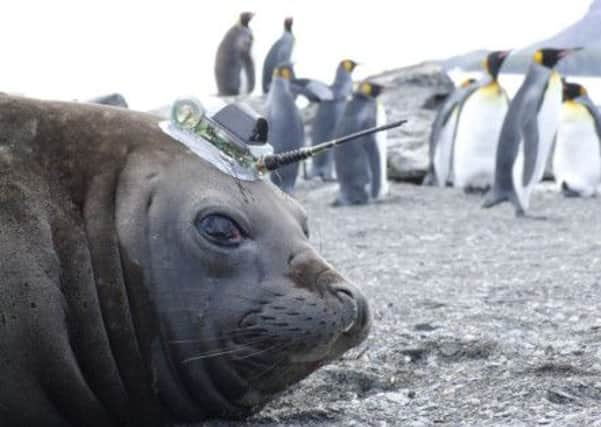Seals sent to South Pole to spy on sea levels


Members of the University of St Andrews Sea Mammal Research Unit will attach custom-made tags to at least 15 elephant and Weddell seals during an Antarctic research cruise early next year.
The data that the seals collect – salinity, temperature and depth – will be beamed back to the researchers in Scotland via satellite every time the mammals surface.
Advertisement
Hide AdAdvertisement
Hide AdThe information will form part of the inter-disciplinary “iSTAR” project, a multi-million pound venture funded by the Natural Environment Research Council to try to establish the sea-level rise caused by the melting of the Pine Island glacier in Western Antarctica. The glacier is the single biggest contributor to sea-level rise of any glacier.
It is about 2km thick, but thinning by more than one metre every year, and moving at speeds in excess of 10 metres a day at some points.
In July, a section roughly eight times the size of Manhattan broke off the Pine Island ice shelf. Scientists suspect that the high amount of ice loss is partly due to warm ocean water reaching the base of the glacier, where it can cause a lot of melting.
This is unusual for a glacier, and researchers hope to get more measurements from the sea under and around the floating ice shelf to confirm this picture.
The seal research is part of an ambitious new project unveiled yesterday at the British Science Festival in Newcastle. Dr Lars Boehme, a senior member of the research unit at the University of St Andrews, said: “I’m really excited about it, it’s a great project.”
Catching the seals to attach the instruments is what Dr Boehme describes as “the fun bit”. Both types of seal like to stay out of the water, safe from predators such as the killer whale, and so researchers can get quite close before anaesthetising them with a dart from a blowpipe. After waiting about 15 minutes for the drugs to take affect, the researchers then have another 20 minutes to attach the tags to the seals’ heads with glue. The heads are chosen as they will stay above water when the seals surface, so the instruments can connect to satellites.
Using seals to collect oceanographic data has several advantages – it is an extremely cost-effective method of getting data from under the sea ice that forms in the winter, as the seals will regularly dive under the ice in search of food.
Where expensive instruments moored in one position have to be recovered, the seals move around, giving information from a range of locations.
Advertisement
Hide AdAdvertisement
Hide AdThe instruments cause no harm to the seals, and will be shed naturally when the seals moult, normally about a year after the tags are attached.
The two species have different advantages for oceanographers. Weddell seals tend to stay very close to where they are tagged and will dive again and again to the seabed in very similar locations, giving a picture of how the temperature and salinity in a particular location change throughout the year. Conversely, the elephant seals will migrate back to sub-Antarctic islands such as South Georgia to breed in August and, as they swim there, they produce measurements quite similar to that gathered by ships, as well as diving as deep as 1,500m.
The information about seal behaviour will be shared with biologists.